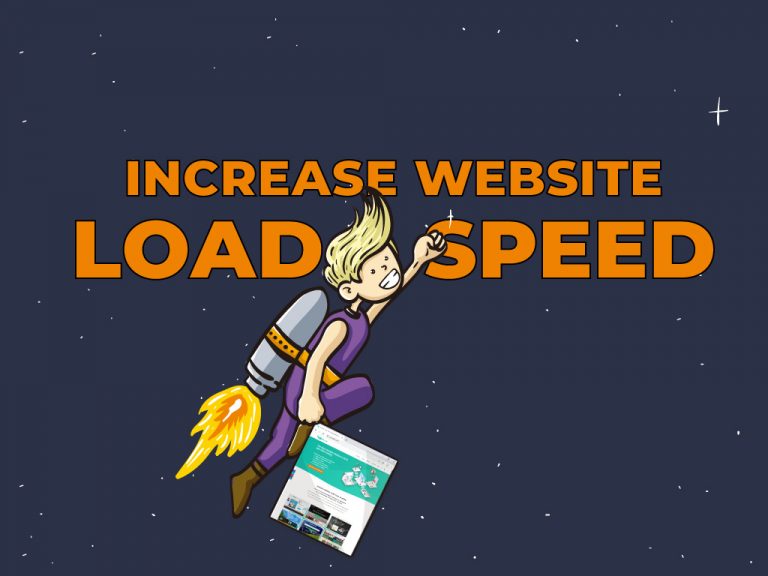It’s a fact that faster websites make more money, and it’s easy to see why. Customers are busy; they don’t have ages to sit around waiting for your website to load one page. This is where using SEO tips that increase website speed can work wonders.
What we’re going to say next might be a little hard to hear, but your website is probably not the only one of its kind on the internet. If your site loads too slowly, customers will just close their browser and go to the next likely-looking site.
But what if you’re not using your website to try to make money?
What if the whole point of your website is to, say, showcase your soul-stirring, original six-syllable poems? Even then, a slow website hurts your search engine ranking, which means there’s a lower chance that your prospective fans will even learn that your website exists.
Table of Contents
How do you know if your website is slow?
If you’re lucky enough to have the kinds of visitors who’ll leave you feedback along the lines of “Twelve seconds to load one page? This is the worst website I’ve ever had the displeasure of clicking on!”, well, there you go. That’s how you know your website is slow.
If you don’t get the kinds of visitors who’ll leave you long, rambling comments telling you exactly why they hate using your website, here are four other ways you’ll know your website is slow:
High bounce rate:
Do you produce great content but never seem to get any visitors to stick around on your website? It might be because your content loads so slowly that nobody ever gets to see
Website speed tests
Website speed tests are tests you can run on your website to see how quickly it loads.
Page load tests
Page load tests check how quickly a particular page on your website loads. Some pages might load more slowly than others because they have more of the bottlenecks you’re going to learn to look out for (and fix!) in this article.
Website tracking software
Website tracking software tell you things like how many visitors click on your website in a certain period, and how long they stay on your website before clicking away. (This is called your “bounce rate”, and any good website tracking software will give you this information.) When you use website tracking software, it’s like you’re virtually sitting beside your visitors and watching them use your website, so you can figure out exactly where your website is losing them.
What does SEO mean, and what does it have to do with website loading time?
SEO stands for “Search Engine Optimization”. When someone types a query into their search engine, the search engine tries to show them the most useful web pages. The most useful pages are usually also the most relevant, but there are other factors that affect search engine rank. Some of those are things like website security (e.g. whether your site has an SSL certificate) and how quickly your website loads.
Slow loading time hurts your search engine ranking.
Search engine optimization is a strategy people use to improve their search engine ranking. Most people know that SEO means looking at what keywords customers are using, and then making sure that those keywords show up somewhere on their website. But a good SEO strategy involves even more than that. It also means making sure your website loads quickly.
A good SEO tool will not only give you the right keywords for your website, but will also help you improve your website’s search engine ranking by giving you specific feedback for individual pages, helping you track quality backlinks to your site, and giving you tips for having a more mobile friendly site.
Top 7 ways to increase website load speed
If your website has been underperforming on website speed tests and page load tests, try these seven tips to give it a speed boost:
1. Choose the right web host
This is probably the easiest way to go to the root of your website’s load time. If your web hosting company’s servers are slow, there’s not much you can do on your end to speed up your website.
That’s why it’s vital to choose the right web hosting solution for your site.
So, before you try any of the other tips, make sure you have the right web host.
2. Reduce HTTP requests
When your website loads a web page, each element of the page is a different HTTP request. This means that every image, video, script and stylesheet on your website slows it down just a little.
Most of the time, this reduction in speed is so tiny that we don’t even notice it. But some web pages are so bloated with image and video files that visitors do start to notice how long it takes for the page to load.
So, scrutinize each web page carefully. Do you really need all the elements that are currently on each web page? If you can remove any of these page elements without sacrificing quality, do it. This is an easy way to give your website a speed boost.
3. Compress your files
Smaller files load more quickly. If your website is filled with lots of bulky files, its loading speed will suffer. CSS and HTML files are especially notorious for having tons of whitespace and repeated code, so they’re good candidates for compression. (If you don’t know how to compress your files yourself, you might want to call in an expert for this one.)
4. Load asynchronously
When you’re loading scripts like CSS and JavaScript, make sure you’ve set them to load asynchronously and not synchronously. When you use asynchronous loading, you make it so that your browser can load scripts in different sections of your web page at the same time. Of course, this makes pages load more quickly. So, if you currently have your scripts set to load synchronously, changing this can give you a noticeable boost in speed.
5. Enable browser caching
If your visitors’ browsers have to load your website from scratch every single time, this eats up valuable loading time. Instead, enable browser caching, so that your page elements can be stored in a cache on their hard drive. This will make it so that when they visit your website, their browser can load the page without sending a new HTTP request to the server, which will make your website load more quickly.
6. Check your images
Images are some of the biggest culprits of slow load times. And for most websites, they’re totally necessary for keeping visitors visually engaged or for showcasing products you want to sell. So, while we’re not advising that you do away with your images altogether, it’s a good idea to make sure you’re using the optimal images for your website.
This means doing things like making sure that the image actually is necessary, and if it is, making sure you’re using the correct file format. (For example, a .JPEG image file is smaller than a .PNG image file, so converting all your image files to .JPEG should give you a boost in speed.)
7. Use a CDN
The closer a user is to a server that hosts your site, the faster your website will load. One way to take advantage of this is to use a CDN, or a Content Delivery Network. This is a network of servers that hosts files in different locations and then routes requests to whichever server is closest to each visitor. This is a great way to optimize your website’s load time.
The wrap-up
A slow website hurts your search engine ranking and repels visitors. If your website is in need of a burst of speed, look at your website speed test and page load test results to see which factor is causing the biggest drag on your load time, then fix it.
When you’ve finished doing that, look at our list of SEO tips and tackle each tip one by one. The boost in search engine ranking (and web traffic!) will be totally worth it.






